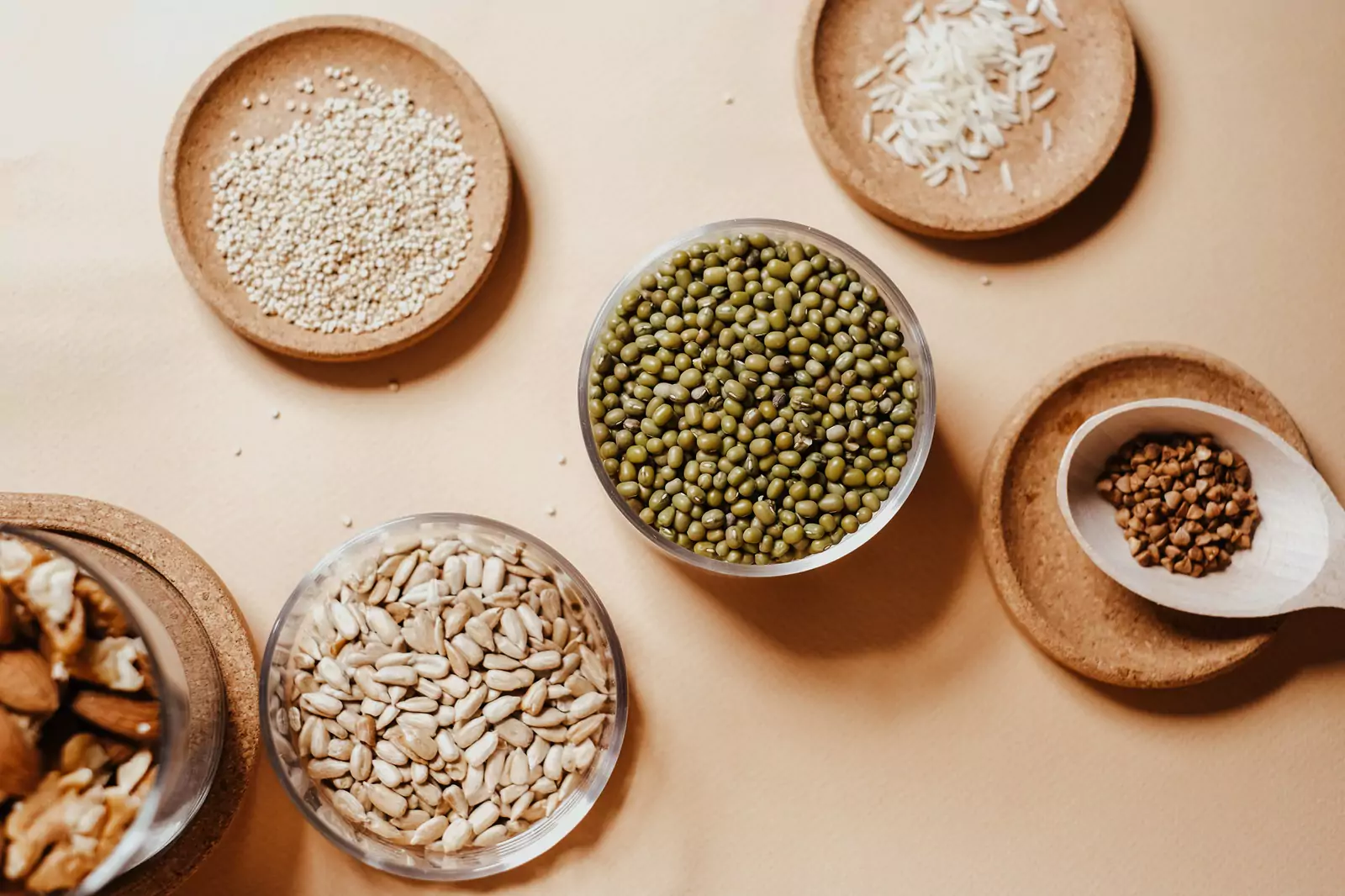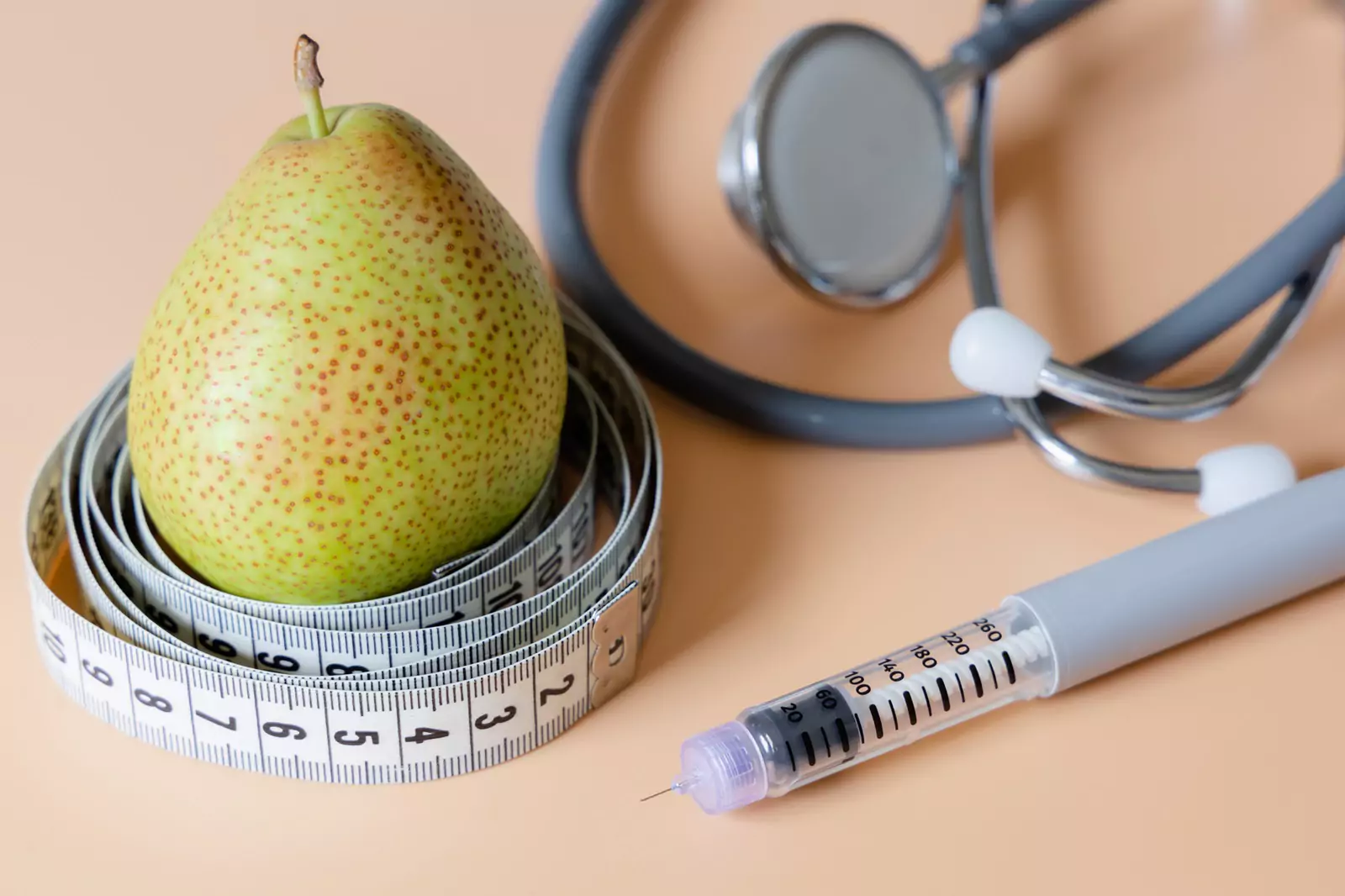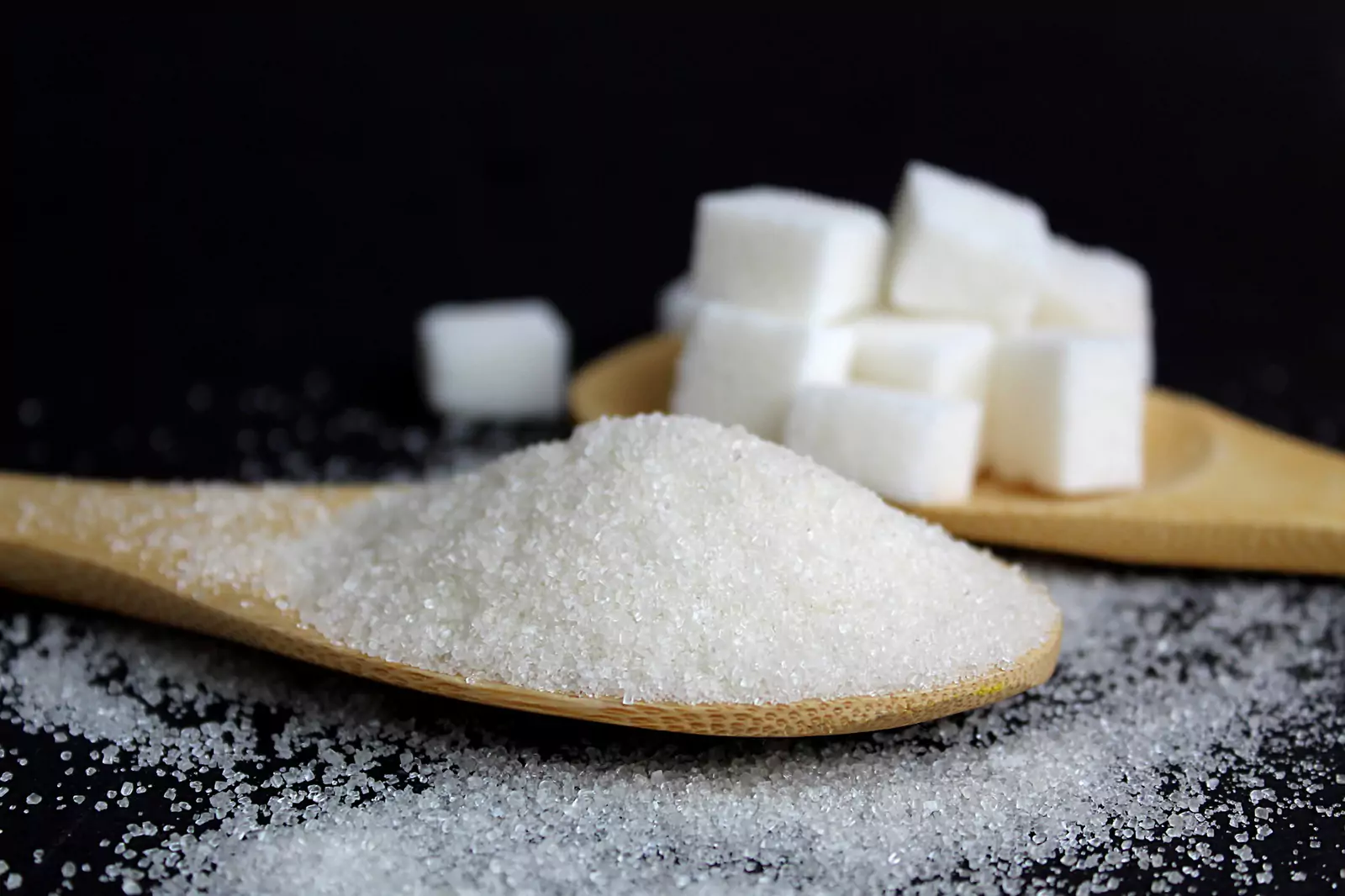





Is Quinoa Good For Diabetes?


Table of Contents
- What is quinoa?
- Health Benefits of Quinoa
- Nutrition Profile
- Blood Sugar Control
- Weight Management
- Possible Side Effects
- What Ingredients are in Quinoa?
- Does Quinoa work to manage your Blood Sugar?
- Best Ways to Prepare Quinoa
- 1. Boil and Simmer
- 2. Steam
- Comparing the Benefits from Quinoa and Oatmeal
- Blood sugar control
- Fiber content
- Protein content
- Nutrient profile
- Does Quinoa Raise your blood Sugar?
- Precautions and Tips
- Conclusion
- About The Author
Are you wondering if quinoa is the right food choice for managing diabetes? Then you've come to the right place! Quinoa is becoming increasingly popular among people with diabetes due to its high nutrient content blood sugar control capabilities and overall health benefits.
In this article, we'll explore whether quinoa is good for diabetes and how it can help you manage your blood sugar levels. We'll also look at some of the nutritional components of quinoa and discuss ways to include it in your diet safely. So let's get started and dive into the world of quinoa and diabetes.
What is quinoa?
Quinoa (pronounced KEEN-wah) is a nutritious and versatile grain that has become increasingly popular in the United States. It's actually a seed but its properties are similar to those of a cereal grain such as wheat barley or oats. Quinoa is a gluten-free alternative to common grains that is rich in dietary fiber protein and minerals making it a great nutritional choice for people with diabetes.
Quinoa comes in several varieties and colors, including white, red, and black. It can be cooked like rice or pasta and can be enjoyed as a hot cereal. It can also be added to baked goods salads soups and more. Quinoa is rich in several essential vitamins and minerals such as magnesium phosphorus potassium and a range of B vitamins.
It is also rich in antioxidants that can help protect your body against oxidative stress and inflammation both of which can be beneficial for those with diabetes. Finally, quinoa is a great source of dietary fiber which can help slow the digestion of carbohydrates and reduce the risk of blood sugar spikes. This can help people with diabetes manage their blood sugar levels and reduce their risk of developing serious complications.
Overall quinoa is an excellent choice for people with diabetes. It's packed with essential vitamins minerals and antioxidants—all of which can provide potential benefits to those with diabetes. Plus its high fiber content can help people with diabetes better manage their blood sugar levels and reduce the risk of complications.
Health Benefits of Quinoa
There is no denying that quinoa is the latest health food trend. But is it actually good for people with diabetes? The answer is a definite yes! Quinoa is rich in essential nutrients including antioxidants, minerals, and vitamins and it can help manage diabetes and other related health issues. Quinoa is low in sugar and contains a decent amount of protein, making it an ideal choice for diabetics.
Quinoa is considered a superfood as it contains all nine essential amino acids which are not found in many other plant-based proteins. It is low in fat and carbohydrates and because it is high in fiber it can help control blood sugar levels. Additionally, quinoa is a great source of magnesium which is known to help regulate blood sugar levels.
Quinoa is also packed with various antioxidants and phytonutrients that can help protect against diabetes-related complications including heart and kidney diseases. The plant-based protein and fiber in quinoa can help reduce inflammation and improve insulin sensitivity. Eating quinoa regularly can also reduce the risk of type 2 diabetes. Furthermore, quinoa is also rich in magnesium which can help control blood pressure and reduce the risk of stroke.
The magnesium fiber and protein content in quinoa can help reduce the risk of obesity a common risk factor for diabetes. In conclusion, quinoa is a great option for people with diabetes. With its high nutritional content and a variety of health benefits, quinoa is an ideal choice of food for diabetics.
Not only can it help regulate blood sugar levels but it can also improve overall health and reduce the risk of diabetes-related complications. So go ahead and give quinoa a try – you won’t regret it! Know more about it's benefits in this video:
Nutrition Profile
When it comes to diabetes, nutrition is key. Quinoa is an excellent choice for people with diabetes as it is a complex carbohydrate and contains a wide variety of vitamins and minerals. Quinoa is full of dietary fiber which helps to regulate blood sugar levels. In addition, quinoa is a good source of protein and contains essential fatty acids which can help to reduce inflammation and improve insulin sensitivity.
Quinoa is also a great source of vitamins and minerals that are beneficial for diabetes management. It’s high in manganese and other minerals that can help control blood sugar levels. Quinoa also contains magnesium which helps to reduce insulin resistance and copper which helps to metabolize glucose.
Studies have also shown that quinoa can reduce cholesterol levels and improve cardiovascular health both of which are important for diabetes management. When it comes to diabetes the glycemic index is an important factor to consider. Quinoa is a low-glycemic food which means that it is slowly digested and absorbed causing a gradual increase in blood sugar levels.
This is important for people with diabetes as it helps to maintain blood sugar control. Finally, quinoa is a great source of phytonutrients and antioxidants. These phytonutrients help to reduce inflammation which can help to reduce the risk of certain diabetes-related complications.
Blood Sugar Control
If you suffer from diabetes or are looking for a dietary option to help you manage your blood glucose levels the answer could be quinoa. Quinoa is an ancient grain that is high in fiber, protein, and many essential vitamins and minerals. It is low in fat and carbohydrates and is gluten-free making it an ideal food choice for those with diabetes. Quinoa is also packed with essential fatty acids which are important for overall health.
Studies show that these fatty acids can actually help to reduce inflammation which can help to control diabetes. In this way, quinoa can help to keep your blood sugar levels stable and aid in overall blood sugar control. In addition to its nutritional benefits, quinoa is also high in fiber. This helps to slow digestion which helps to prevent spikes in blood sugar levels.
Fiber also helps to reduce cholesterol levels which can help to reduce the risk of heart problems associated with diabetes. Quinoa is also a good source of magnesium, a mineral that helps to regulate blood sugar levels.
Magnesium helps the body use glucose more efficiently and can also help reduce the risk of developing diabetes in people at risk. Finally, quinoa has a low glycemic index making it less likely to cause rapid spikes in blood sugar levels.
This is one of the most important benefits for those with diabetes as quickly fluctuating blood sugar levels can be detrimental to their health. All in all, quinoa is a great option for those with diabetes. It is high in essential vitamins and minerals, is low in fat and carbohydrates, and has a low glycemic index. These benefits make it an ideal choice for those looking to manage their blood sugar levels.
Additionally, quinoa can help reduce inflammation lower cholesterol levels, and provide essential magnesium to help regulate blood sugar levels. So if you are looking for a dietary option to help you manage your diabetes quinoa is an excellent choice.
Weight Management
For people with diabetes weight management can be a challenge. But quinoa could be the answer. While its nutrient profile—high in fiber complex carbohydrates and protein—might make it seem like it could be unhealthy for those with diabetes quinoa is actually a great choice. It has a low glycemic index meaning it doesn’t raise blood sugar levels as quickly as other foods do.
The fiber content in which quinoa is packed helps slow blood sugar spikes and aids in digestion giving a steady and stable source of energy. Quinoa also packs a big protein punch which is important for diabetics. Protein helps to keep blood sugar levels stable which is especially important during long periods of physical activity or inactivity.
Additionally, quinoa is high in essential vitamins and minerals like magnesium and B vitamins which can help keep diabetes in check. Plus you can enjoy quinoa in a variety of ways making it guaranteed to please even the pickiest of eaters. It’s delicious in soups and salads as a savory side dish as a breakfast cereal and even as a savory snack.
Its hearty flavor and texture make it a great way to get your daily nutrient needs. So if you’re looking for nutritious tasty and diabetes-friendly food look no further than quinoa. It just may be the answer to your weight management goals.
Possible Side Effects
Quinoa is a popular superfood that has been gaining popularity for its many health benefits including its possible role in helping to manage diabetes. But like any food or supplement, there are potential side effects associated with eating quinoa if it’s not consumed appropriately or in moderation. As such it’s important for people with diabetes to understand the potential risks associated with eating quinoa and to talk to their doctor before making any significant dietary changes.
One potential side effect associated with eating quinoa is an increased risk of gastrointestinal distress such as cramping bloating and gas. Quinoa is a high-fiber food and may cause digestive issues in those who are not used to consuming a lot of fiber. It’s also high in oxalate which can cause issues in susceptible individuals. Other potential side effects of eating quinoa include headaches dizziness and fatigue.
It’s also important to remember that quinoa is still a carbohydrate and eating too much of it can lead to a spike in blood sugar levels. People who are prone to high blood sugar or are sensitive to carbohydrates should be particularly careful when adding quinoa to their diet. It’s important to monitor blood sugar levels carefully and talk to a doctor before making significant dietary changes.
Despite these potential side effects the health benefits associated with eating quinoa are numerous and can make it an excellent addition to a diabetes-friendly diet. Quinoa is high in protein and fiber which can help in stabilizing blood sugar and keeping appetite in check.
It also contains essential minerals and vitamins including magnesium which is known for its role in helping to facilitate the uptake of glucose into the cells and provide energy for the body. Ultimately quinoa may be a beneficial food for those with diabetes but it’s important to talk to a doctor before making any major dietary changes.
Eating too much quinoa can lead to gastrointestinal distress and other side effects so it’s important to practice moderation and to monitor blood sugar levels carefully. With the proper precautions, quinoa can be a healthy and delicious addition to a diabetes-friendly diet.
What Ingredients are in Quinoa?
Quinoa is a seed-like food similar to rice or oats that has been consumed for centuries by people in the Andean region of South America. It is a complete protein meaning it contains all nine essential amino acids which makes it a great alternative to meat for those following vegan or vegetarian diets. When it comes to being good for diabetes quinoa is considered a valuable addition to anyone’s diet.
Its low glycemic index and fiber content make it a particularly beneficial diet choice for diabetics. Additionally, quinoa is rich in minerals such as iron magnesium phosphorus zinc, and manganese which may be beneficial for controlling diabetes. So what ingredients are in quinoa? Quinoa is most commonly sold in its whole grain form and consists of the husk germ and endosperm of the grain.
The husk is the outermost layer which is removed during processing. The germ is the innermost layer and contains the highest concentrations of vitamins minerals and fiber. Lastly, the endosperm is the starchy portion of the grain and is what gives quinoa a nutty flavor and chewy texture. Quinoa is naturally gluten-free and high in dietary fiber making it a great addition to any diabetes-friendly meal plan.
In addition to being an excellent source of protein quinoa is also high in several essential nutrients such as vitamin B6 folate magnesium and phosphorus. Quinoa is also rich in beta-carotene an antioxidant that helps to protect the body from free radicals. Overall quinoa is an excellent nutrient-dense grain that can be a valuable addition to any diabetes meal plan.
With its low glycemic index and high fiber content, quinoa can help to keep blood sugar levels stable and help to reduce the risk of insulin resistance. Quinoa’s nutrient-rich profile makes it a great choice for those with diabetes and its versatility makes it a great addition to any meal.
Does Quinoa work to manage your Blood Sugar?
Research suggests that quinoa can help manage diabetes as it can help reduce blood sugar levels and improve glycemic control. Quinoa is a high-fiber low-glycemic food meaning that it can help slow the absorption of glucose and reduce the risk of blood sugar spikes after meals.
The high-fiber content in quinoa can also help delay the release of glucose into the bloodstream which can help to regulate blood sugar levels. The dietary fiber in quinoa is also beneficial for those with diabetes as it can help reduce the risk of constipation and other gastrointestinal problems associated with diabetes. Quinoa is also a complex carbohydrate which means that it can provide more sustained energy than simple carbohydrates.
This means that people with diabetes can benefit from the sustained energy that quinoa provides as opposed to the energy boost that simple carbohydrates may provide which can often cause blood sugar levels to surge. In addition to its health benefits quinoa is also an extremely versatile grain that can be incorporated into a variety of dishes and meals.
It can be enjoyed as a side dish a topping for salads or even used as a grain-free alternative to traditional grains such as rice and couscous. In conclusion, quinoa is a nutritious high-fiber low-glycemic food that can help to reduce blood sugar levels and improve glycemic control.
People with diabetes can benefit from the sustained energy provided by quinoa as well as its versatility in the kitchen. Therefore incorporating quinoa into your diet can be a beneficial dietary choice for those with diabetes.
Best Ways to Prepare Quinoa
When preparing quinoa for diabetes it’s important to choose the right cooking methods. Here are two of the best ways to prepare quinoa for diabetes:
1. Boil and Simmer
When you boil quinoa it cooks evenly and stays light and fluffy. This way of cooking it is the fastest and it's the best option if you are in a hurry. To boil quinoa; add 1 part quinoa and 2 parts water to a pot and bring it to a boil. Once boiling lower the heat to a simmer cover the pot and let it cook for about 15 minutes until the quinoa is tender.
2. Steam
Steaming is a great way to retain the maximum amount of nutrients in your quinoa. To steam quinoa first rinse the quinoa with cold water and add it to a steamer basket inside a pot. Fill the pot with 1-2 inches of water and bring to a boil. Lower the heat to a simmer, cover the pot, and allow the quinoa to steam for 15-20 minutes until the grains are tender.
After cooking fluff the quinoa with a fork and serve. No matter what cooking method you choose you can enjoy quinoa as part of a healthy diet to help manage diabetes.
Remember quinoa is a great source of fiber and other essential nutrients so it's an excellent choice for people with diabetes. If you are looking to incorporate quinoa into your diet make sure to include it in your meal plan to reap the full benefits for your diabetes.
Comparing the Benefits from Quinoa and Oatmeal
If you’re looking for a healthy meal choice for managing diabetes it may be worth comparing the benefits of quinoa vs. oatmeal. Both grains are nutrient-dense and contain slow-digesting carbohydrates that help the body maintain stable blood sugar levels. Quinoa and oatmeal have different nutrient profiles however so they can affect diabetes differently.
Blood sugar control
Quinoa is a low glycemic index (GI) food, meaning it has a slower and more gradual effect on blood sugar levels compared to high GI foods. Oatmeal also has a low GI, but the exact GI value can vary based on the processing and preparation of the oats.
Fiber content
Both Quinoa and Oatmeal are good sources of fiber, which helps regulate blood sugar levels by slowing down digestion and absorption of carbohydrates. Quinoa has slightly more fiber per serving compared to oats, but both are beneficial for diabetes management.
Protein content
Quinoa is a complete protein, meaning it contains all the essential amino acids, which can help regulate blood sugar levels. Oatmeal also contains protein, but it is not a complete protein source.
Nutrient profile
Quinoa is a nutrient-dense food that is rich in vitamins, minerals, and antioxidants that are beneficial for diabetes management. Oatmeal also provides a range of nutrients but to a lesser extent compared to quinoa. In conclusion, both Quinoa and Oatmeal can provide benefits for individuals with diabetes due to their low glycemic index, fiber content, protein content, and nutrient profile.
However, Quinoa may have a slight edge due to its complete protein source and higher nutrient density. It's important to speak with a healthcare professional about specific dietary recommendations for managing diabetes.
Does Quinoa Raise your blood Sugar?
When it comes to managing diabetes diet plays a huge role. For people with diabetes or prediabetes quinoa is one of the most beneficial grains to include in their diet due to its wealth of nutrients and low glycemic index. A diet rich in whole grains is essential for managing blood sugars and preventing diabetes-related complications.
But not all grains are equal when it comes to maintaining healthy blood sugar levels - with quinoa being one of the best. Quinoa has a low glycemic index meaning it won’t raise your blood sugar as quickly as other grains. This makes it a great choice for those with diabetes or prediabetes as it will help regulate their glucose levels.
Additionally, quinoa is high in fiber proteins and minerals as well as antioxidants - which can also help regulate blood sugar levels. For people with diabetes, it’s important that quinoa is still a carbohydrate, and eating too much of it can lead to a spike in blood sugar levels.
People who are prone to high blood sugar or are sensitive to carbohydrates should be particularly careful when adding quinoa to their diet. It’s important to monitor blood sugar levels carefully and talk to a doctor before making significant dietary changes.
Precautions and Tips
Here are some tips to remember when it comes to adding quinoa to your diabetes-friendly diet:
• Choose organic unprocessed quinoa instead of packaged quinoa mixes which can contain added sugar and other additives that aren’t diabetes-friendly
• Prepare your quinoa in bulk and store it in the refrigerator or freezer so it is readily available when you need it.
• Limit the amount of quinoa you consume in a single serving to a half cup as too much quinoa can still cause a spike in glucose levels.
• Include a healthy fat such as olive oil or nuts when preparing your quinoa to help slow down the release of sugar into your bloodstream.
• Balance your quinoa dish with a variety of other ingredients such as vegetables and lean proteins to help slow down the absorption of sugar.
• Monitor your blood sugars regularly to ensure your quinoa intake is not causing any spikes in your blood sugar levels. Including quinoa in your diet can be a great way to control your diabetes but it is important to do so responsibly.
Talk with your doctor or nutritionist to ensure you are eating the optimal amount of quinoa to fit within your dietary needs.
Conclusion
In conclusion, quinoa is an incredibly nutritious and versatile food to add to your diet if you have diabetes. It is packed with nutrients and has been shown to be beneficial for managing blood sugar levels and promoting weight management. Quinoa can be cooked in many different ways depending on your preferences and what flavors you prefer.
Quinoa is also low in calories and naturally gluten-free, making it a great substitute for other gluten-containing grains. On the downside, some people find that quinoa can cause digestive issues and raise your blood sugar levels. If this is the case, monitor your blood sugar levels and adjust your diet accordingly.
Finally, it's important to make sure that you don't rely too heavily on quinoa and make sure to include a variety of healthy foods in your diet to ensure that you're getting all the vitamins minerals, and macronutrients that your body needs.
About The Author
Meet Dr. Ahmet Ergin a highly skilled and dedicated endocrinologist with a passion for diabetes care. Dr. Ergin's journey in the medical field began with earning his medical degree with honors from Marmara University School of Medicine in Istanbul Turkey.
He then went on to complete his internal medicine residency and endocrinology fellowship at Cleveland Clinic one of the top medical centers in the United States located in Cleveland Ohio. With a wealth of knowledge and experience in his field, Dr. Ergin is board-certified in Internal Medicine Endocrinology Diabetes, and Metabolism making him a respected and highly qualified physician.
He is also a certified diabetes education specialist author of the book "The Ultimate Diabetes Book" and the founder of the SugarMD YouTube channel where he shares valuable insights and information on diabetes management and care. Currently, Dr. Ergin practices in Port Saint Lucie FL where he provides exceptional care to his patients and helps them to effectively manage their diabetes.
It is important to note that the information on diseases and treatments provided on this website is for general guidance only and should never be considered a substitute for the advice provided by a qualified healthcare professional. Always seek the advice of your physician health provider or other qualified healthcare professional with any questions you may have regarding your health.
Written By Dr. Ahmet Ergin
461 total articles
Meet Dr. Ahmet Ergin, a highly skilled and dedicated endocrinologist with a passion for diabetes care. Dr. Ergin earned his medical degree with honors from Marmara University in Istanbul. He completed internal medicine residency and endocrinology fellowship at Cleveland Clinic. Dr. Ergin is board-certified in Internal Medicine, Endocrinology, Diabetes, and Metabolism due to his vast medical expertise. He's a certified diabetes educator, author of “The Ultimate Diabetes Book,” and founder of “the SugarMD YouTube channel.” Dr. Ergin offers exceptional diabetes care to his patients in Port Saint Lucie, FL, helping them manage effectively. For a closer look into his insights and experiences, connect with Dr. Ahmet Ergin on LinkedIn, Instagram, and YouTube.”
Disclaimer: These statements have not been evaluated by the Food and Drug Administration. Information on this website isn't intended to treat, cure or prevent any disease. Discuss with your doctor and do not self-treat.
Products











